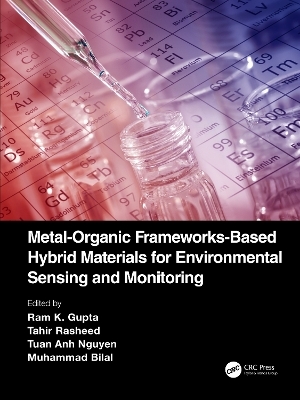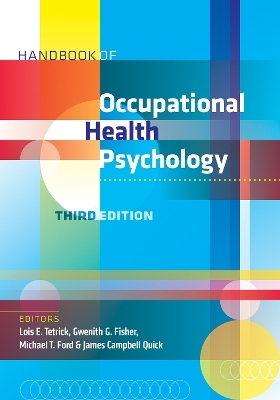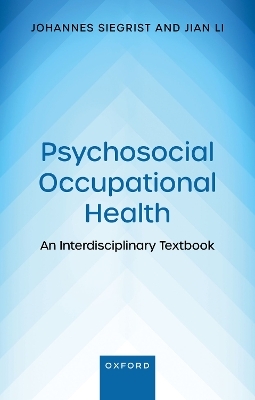
Metal-Organic Frameworks-Based Hybrid Materials for Environmental Sensing and Monitoring
CRC Press (Verlag)
978-1-032-02453-0 (ISBN)
With an unprecedented population boom and rapid industrial development, environmental pollution has become a severe problem for the ecosystem and public health. Classical techniques for sensing and determining environmental contaminants often require complex pretreatments, expensive equipment, and longer testing times. Therefore, new, and state-of-the-art sensing technologies possessing the advantages of excellent sensitivity, rapid detection, ease of use, and suitability for in situ, real-time, and continuous monitoring of environmental pollutants, are highly desirable.
Metal-Organic Frameworks-based Hybrid Materials for Environmental Sensing and Monitoring covers the current-state-of-the-art hybrid nanomaterials based on metal-organic frameworks for electrochemical monitoring purposes. Accomplished authors cover various synthetic routes, methods, and theories behind enhancing the electrochemical properties and applications of metal-organic frameworks-based hybrid nanomaterials for electrochemical sensing of environmental pollutants under one roof.
This book is essential reading for all academic and industrial researchers working in the fields of materials science and nanotechnology.
Dr. Ram Gupta is an Associate Professor at Pittsburg State University. Dr. Gupta’s research focuses on conducting polymers and composites, green energy production and storage using biowastes and nanomaterials, optoelectronics and photovoltaics devices, organic-inorganic hetero-junctions for sensors, bio-based polymers, flame-retardant polymers, bio-compatible nanofibers for tissue regeneration, scaffold and antibacterial applications, corrosion inhibiting coatings, and bio-degradable metallic implants. Dr. Gupta has published over 230 peer-reviewed articles, made over 280 national, international, and regional presentations, chaired many sessions at national/international meetings, edited many books, and written several book chapters. He has received over two and a half million dollars for research and educational activities from many funding agencies. He is serving as Editor-in-Chief, Associate Editor, and editorial board member of numerous journals. Dr. Tahir Rasheed is currently working as a researcher at Interdisciplinary Research Center for Advanced Materials, King Fahd University of Petroleum and Minerals, Saudi Arabia. He received his Ph.D. and degree in Polymer Chemistry and postdoctoral research from the School of Chemistry and Chemical Engineering, Shanghai Jiao Tong University, China. Dr. Rasheed has published more than 130 scientific contributions in the form of Research, Reviews, Book Chapters and Editorial type scientific articles in various areas of Science & Engineering. His research interests focus on multiple disciplines including controllable synthesis, characterization and Self-assembly of Polymeric materials, polymers & polymer based composites, nanomaterials & nanocomposites, hybrid nanocomposites, Carbon materials, Energy storage materials, with special emphasis on their potential applications in the field of sensing and biosensing, electrocatalysis, Degradation and quantification of various emerging pollutants, solid polymer electrolytes, gel polymer electrolytes for flexible Zinc based batteries and electrodes in energy storage devices (i.e. LI-S and ZIBs etc.). Tuan Anh Nguyen has completed his BSc in Physics from Hanoi University in 1992, and his Ph.D. in Chemistry from Paris Diderot University (France) in 2003. He was a Visiting Scientist at Seoul National University (South Korea, 2004) and the University of Wollongong (Australia, 2005). He then worked as a Postdoctoral Research Associate & Research Scientist at Montana State University (USA), 2006-2009. In 2012, he was appointed as Head of Microanalysis Department at the Institute for Tropical Technology (Vietnam Academy of Science and Technology). His research focuses on the advanced nanomaterials and applied nanotechnology. His research activities include smart coatings, conducting polymers, corrosion and protection of metals/concrete, antibacterial materials, and smart sensors/devices. He has managed 4 Ph.D. theses as thesis director and 3 are in progress; He is Editor-In-Chief of "Kenkyu Journal of Nanotechnology & Nanoscience" and Founding Co-Editor-In-Chief of "Current Nanotoxicity & Prevention". He is the author of 4 Vietnamese books and Editor of over 52 Elsevier/9 CRC Press books. Dr. Bilal is presently working as an Associate Professor in the School of Life Science and Food Engineering, Huaiyin Institute of Technology, Huaian, China. He accomplished his Ph.D. from Shanghai Jiao Tong University with a specialization in Bioengineering and Applied Biotechnology. He has published more than 400 scientific contributions in the form of Research, Reviews, Book Chapters and Editorial type scientific articles in various areas of Science & Engineering. He has an H-index = 50 along with more than 9000 citations. He has edited several special issues and books and serves as a scientific reviewer in numerous peer-reviewed journals. Dr. Bilal has a collaborative network with national and international institutes/universities across the globe. His research interests include Environmental biotechnology/bioengineering, nanotechnology, bio-catalysis, enzyme engineering, immobilization, chemical modifications and industrial applications of microbial enzymes, bioremediation of hazardous and emerging pollutants, liquid and solid waste management – valorization of agro-industrial wastes and biomaterials for bioenergy.
1 Metal-Organic Frameworks: An Introduction to Advanced Sensing Applications
2 Introduction to metal-organic frameworks
3 Recent development in MOFs-Polymer composites
4 MOFs- metal oxide based nanocomposites
5 Synthesis and applications of metal organic frameworks-chalcogenide based nanocomposites
6 Merits of Selecting Metal-Organic Frameworks as Sensors
7 MOFs as Sensors – Methods & Merits
8 Strategies to Improve Sensitivity and Selectivity of MOF-based Sensors
9 MOFs composites as catalysts for electrochemical sensors
10 Recent Advancement and Challenges in MOFs based Electrochemical Sensors
11 MOFs Based Electrochemical Sensors for Toxic Anions
12 MOFs-based electrochemical sensors for alkali metal cations
13 MOFs-based electrochemical sensors for nitrogen oxide/carbon dioxide
14 MOFs-based electrochemical sensors for ammonia
15 MOFs-based Electrochemical Sensors for Hydrogen Peroxide
16 MOF-based Capacitive and Resistive Sensors for Hydrogen Sulfide
17 Metal–Organic Framework-Based Sensors for Detecting Hydrogen Sulfide
18 MOFs-based sensors for volatile organic compounds
19 Metal‐Organic Frameworks for Organic Dye Adsorptions: Strategic Design and Interaction Aspects
20 MOFs-based Electrochemical Sensors for Pesticides
21 An overview of metal organic frames (MOFs) for detection of pesticides
22 MOFs Based Electrochemical Sensors for Glucose
23 MOFs-based electrochemical sensors for protein detection
24 MOFs-based electrochemical sensors for biological macromolecules sensing
25 MOFs-based electrochemical sensors for DNA/RNA/ATP
26 Metal Organic Frameworks based electrochemical sensors for Neurochemicals
27 MOFs-based electrochemical sensors for pharmaceutical compounds
28 MOFs-based electrochemical sensors for pharmaceutical compounds
29 MOFs-based electrochemical sensors for Endocrine-disrupting compounds
30 MOFs-based electrochemical sensors for viruses/bacteria
31 MOF-Derived Smart Sensors, Challenges and Future Perspective
| Erscheinungsdatum | 16.05.2022 |
|---|---|
| Zusatzinfo | 30 Tables, black and white; 59 Line drawings, color; 85 Line drawings, black and white; 24 Halftones, color; 17 Halftones, black and white; 83 Illustrations, color; 102 Illustrations, black and white |
| Verlagsort | London |
| Sprache | englisch |
| Maße | 210 x 280 mm |
| Gewicht | 453 g |
| Themenwelt | Medizin / Pharmazie ► Medizinische Fachgebiete ► Arbeits- / Sozial- / Umweltmedizin |
| Studium ► Querschnittsbereiche ► Klinische Umweltmedizin | |
| Technik ► Elektrotechnik / Energietechnik | |
| Technik ► Maschinenbau | |
| Technik ► Umwelttechnik / Biotechnologie | |
| ISBN-10 | 1-032-02453-4 / 1032024534 |
| ISBN-13 | 978-1-032-02453-0 / 9781032024530 |
| Zustand | Neuware |
| Informationen gemäß Produktsicherheitsverordnung (GPSR) | |
| Haben Sie eine Frage zum Produkt? |
aus dem Bereich

